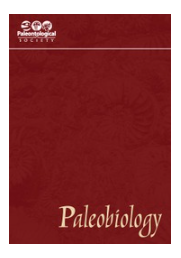Paleontologists have long used repeated observations from fossil species to document and understand patterns of trait evolution. Here we describe a flexible framework for modeling such data called linear state space models. After summarizing this approach and its properties, we apply it to a classic dataset of trait evolution in species of diatom, a kind of unicellular algae. A set of models were fit to these diatom data using the state space approach, the best supported of which involved a novel model in which the focal trait tracks variations in solar insolation over time. Overall, state space models offer a useful framework for paleontologists to robustly develop, fit, and evaluate models of trait evolution.

The most recent
Abstract
Linear state space models provide a useful framework for investigating phenotypic evolution in fossil lineages for a wide variety of models representing Brownian motion, Ornstein-Uhlenbeck processes, and the potential influence of environmental covariates. A state space framework also provides access to residuals for the predicted and observed values at each time point as well as improved numerical stability. We illustrate the value of the state space approach by reanalyzing a classic dataset of trait evolution in the diatom lineage Stephanodiscus yellowstonensis. A series of increasingly complex models were fit to these data, including a novel modification of an Ornstein-Uhlenbeck model in which a trait tracks an exogenous covariate. These model results suggest that the number of spines on the periphery of the diatom is best explained by adaptation to changing solar insolation over time.

